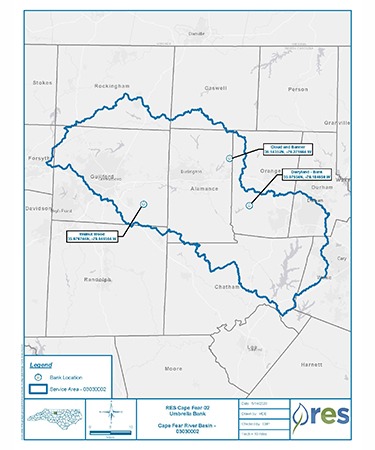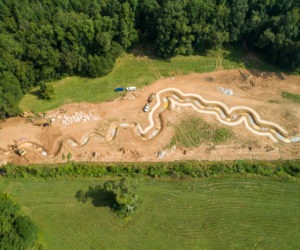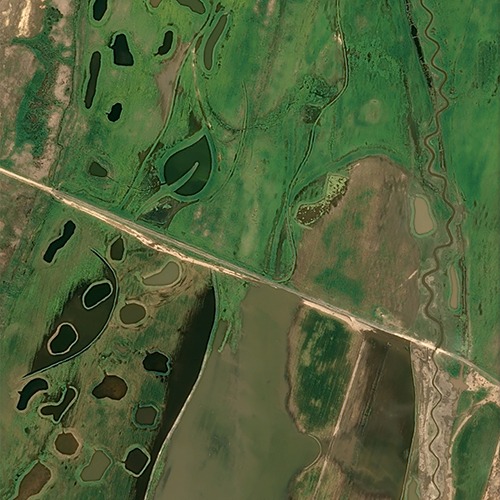
- People
- Working Here
-
-
A Career with an Impact
View Available Jobs »
-
Student Internship Opportunities
Learn More »
-
-
- Safety (EHS&S)
Creating a Culture of Safety

Our team is dedicated to empowering team members with safety leadership and promoting a safe, secure and environmentally- friendly work environment in all facets of our business.
- Landowners
Find Landowner Representative in my State
 Explore making part of your land, a legacy of resiliency for future generations.
Explore making part of your land, a legacy of resiliency for future generations.
- Vendors
- Working Here
- Capabilities
- Our Solutions
- Our Approach
What is “Active Stewardship”?
 At RES, we don’t build sites and walk away. We design them to thrive, and stick around until they do.
At RES, we don’t build sites and walk away. We design them to thrive, and stick around until they do.
- Industries
- Videos
- Our Solutions
- Places
- Buy Credits
Buy Mitigation Credits
 Impacts are sometimes unavoidable. For these situations, we offer ecological offsets in the form of mitigation credits.
Impacts are sometimes unavoidable. For these situations, we offer ecological offsets in the form of mitigation credits.
- Find Projects
Find Projects
 RES delivers resiliency, project by project. Understanding them is the best way to get to know us.
RES delivers resiliency, project by project. Understanding them is the best way to get to know us.
- Search States
Search by State
 Keeping the ecological balance is an intensely local endeavor. See how we meet the challenge in your area.
Keeping the ecological balance is an intensely local endeavor. See how we meet the challenge in your area.
- Nurseries
-
- Buy Credits
- About Us
- Who We Are
- Leadership Team
Meet our Leadership Team
- Acquisitions
We are growing the RES family.
 We strengthen our team by bringing on respected teams of experts with local knowledge and experience, who share our vision of a resilient earth.
We strengthen our team by bringing on respected teams of experts with local knowledge and experience, who share our vision of a resilient earth.
- News
- Who We Are
- Restoring at Scale
- Buy Credits
- Contact Us
Places > Dairyland Stream Mitigation
Dairyland Stream Mitigation
PROJECT SNAPSHOT
Project Type
Mitigation BankLocation
North Carolina | Orange CountyService Area
Cape Fear 02Project Size
Wetland: 28.6 ACSolution
Stream MitigationHabitat Types
- Stream
The Dairyland Stream Mitigation site is located in Orange County, North Carolina, about eight miles southwest of Hillsborough. Dairyland is within the Haw River portion of the Jordan Lake Watershed, 03030002 HUC, which is highly developed along the I-40 Corridor from Greensboro to Chapel Hill, and is dominated by agricultural and forested areas south and north of the I-40 Corridor.
Pre-restoration, the project area exhibited diminished hydrology and habitat value as a result of past agricultural activities. The project watershed is primarily characterized by agriculture, forests, and low-intensity residential areas. Land use at the site is characterized by the row crop production, pasture, impoundments, and disturbed forest. Pre-restoration, riparian zones were primarily composed of herbaceous vegetation and scattered trees located adjacent to the streams. The project area contains two parcels totaling 28.6 acres of conservation easement in the southwestern Orange County, NC. Hudson Branch (HB-1 and HB-2) and two unnamed tributaries (including two ponds) encompass the majority of the northern part of the project area. Watery Fork (WF-1 and WF-2) begins on the northern parcel, then crosses Dairyland Road and flows to the southeast. The project is hydrologically connected to a separate conservation easement downstream of Dairyland Road.
The project presents 3,657 Stream Mitigation Units (SMU) through a combination of stream, restoration, enhancement, and preservation. Construction was completed in 2018. Project benefits include the storage of excess water during flood events, preventing erosion of stream banks, reducing in-stream sedimentation, restoring aquatic passage, thermal regulation, and nutrient reductions.

Cape Fear 02 Service Area



 Read the latest news about RES, our projects and our people.
Read the latest news about RES, our projects and our people.





